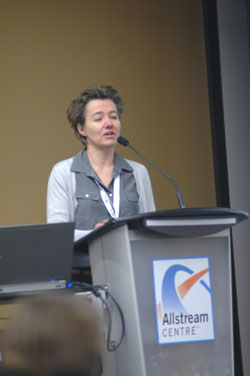Many people dream about owning a country cottage or summer vacation home, but the reality is often a disappointment in an unexpected way. When it’s all said and done, “too much work” is how many cottagers feel about their ownership experience. They probably won’t come right out and say it (though I know one man who mentioned this out loud many times, particularly in the spring), but it’s often true. This is especially unfortunate since attractive, low-maintenance building strategies have never been more plentiful. The trick is creating a low-maintenance cottage that doesn’t look like something transplanted from the suburbs. One of the worst things that can happen to a beautiful rural place is when it degenerates into suburban architecture. It just doesn’t look right. Specific building materials – both old and new – can be used to walk the fine line between a cottage that looks like it belongs in a beautiful forested or lakeside setting, and exterior design features that make few maintenance demands. Let me show you what I mean. What you read here can make an enormous difference to your enjoyment of your place.

As it turns out, the biggest cottage maintenance challenges almost always involve exterior wood. Cottage owners want something that looks “natural”, but they’re soon surprised by how much ongoing attention wood demands when used outdoors. That’s why you need to use it sparingly as part of any low-maintenance cottage exterior. Here are six low maintenance design strategies to keep in mind as you build or renovate a country cottage or rural getaway.
Cottage Design Idea#1: Use Synthetic Deck Materials
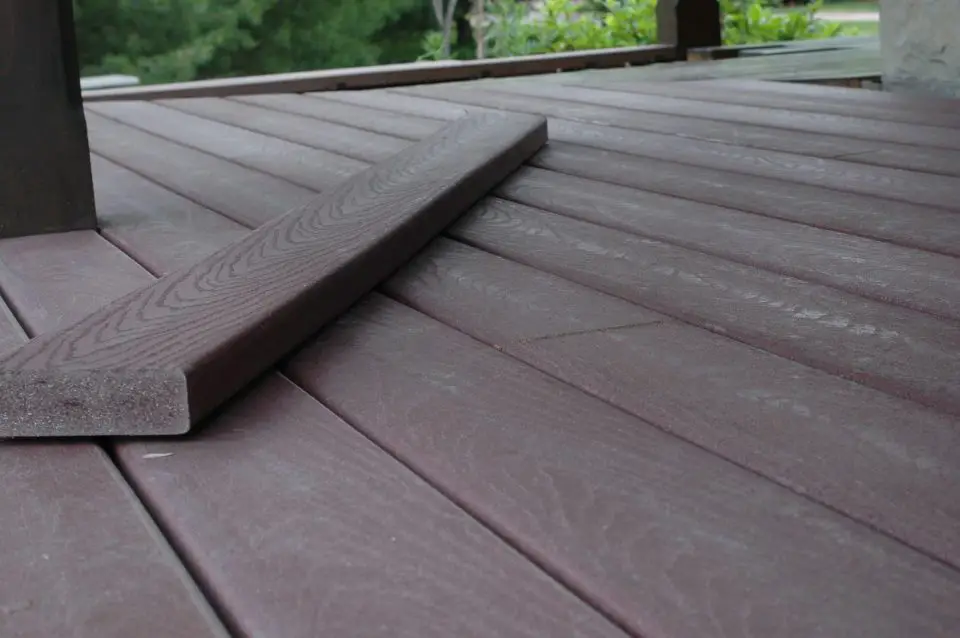
Composites are outdoor materials made of recycled wood and plastic, and they’re made into “lumber” that never needs finishing. Technically speaking this isn’t exactly natural, but the best composites look great, they fit right into a cottage setting, and they save you a lot of finishing hassles. Composites are terrific for decks, docks, verandah floors and even outdoor furniture. The stuff you see above is Trex. It’s one of many brands of composites. I first used it in the early 2000s and it’s great. It even performs well on a swimming raft.
Composite wood substitutes certainly have their place in reducing your cottage maintenance load, but do you have your heart set on some kind of real wood siding for your new cottage or addition? Consider cedar shingles as an exterior wall siding option. It is by-far the longest lasting, most weather-resistant wood siding option available, as you’ll see.
Cottage Design Idea#2: Cedar Sidewall Shingles
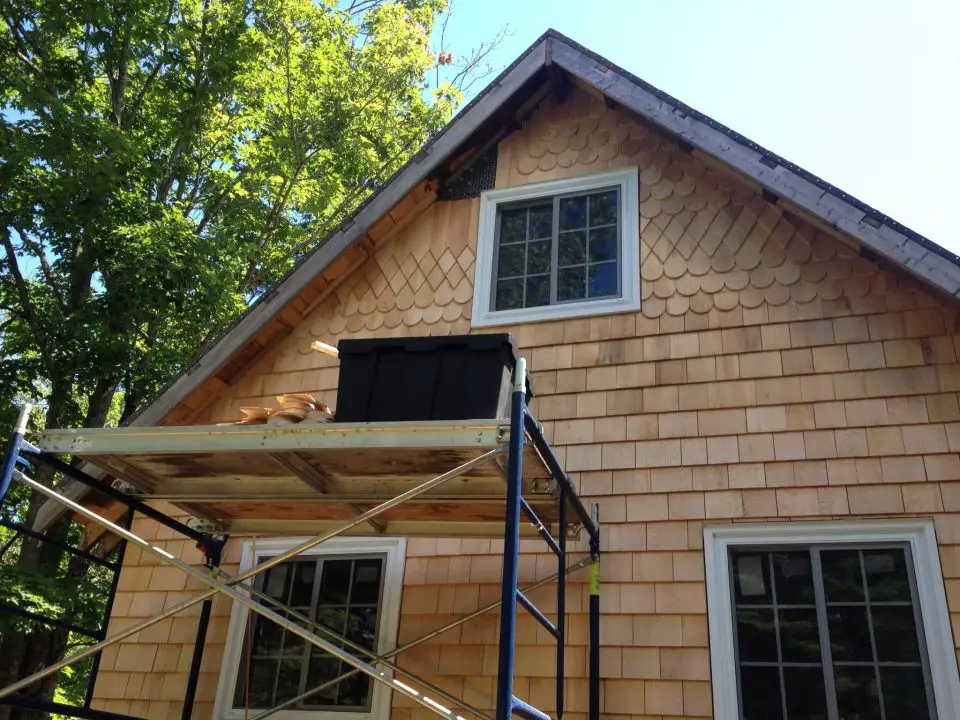
Nothing compares with the durability and long-term good looks of this kind of wood siding. I’ve even seen 80-year old cedar wall shingles still holding back the weather on walls and looking terrific without ever being maintained since new. Don’t make the mistake of thinking that cedar shingles are no different than any other wood siding as far as maintenance and durability goes. That’s simply not true. Since the direction of wood grain on shingles is vertical, they shed water and last longer than wood siding with its horizontal grain direction. And cedar sidewall shingles only ever need to be finished if you want that for looks. They last fine unfinished for decades.
Cottage Design Idea#3: Choose a Submersible Water Pump
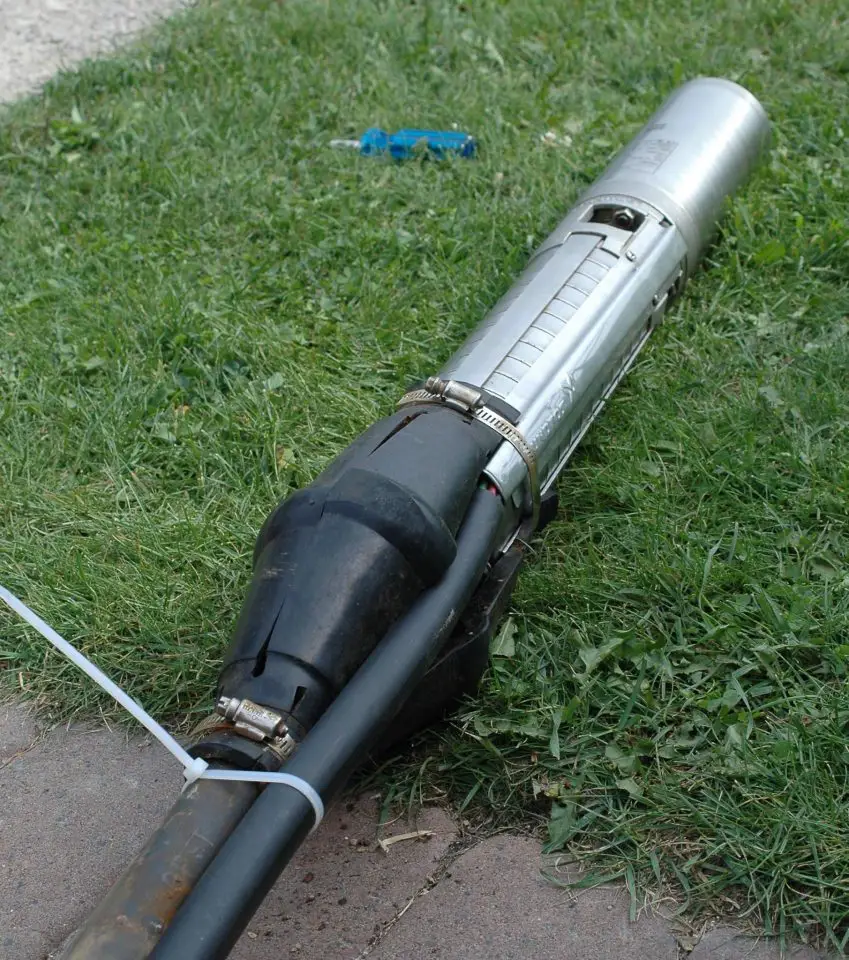
Flick a switch on a submersible water pump and your cottage water system and it works again in the spring. What could be better than that? This is the ultimate in ease and it’s what a submersible water pump can do for you. Much better than the painful priming chores most cottage owners need to deal with because of their jet pump or piston pump installations. Submersible pumps sit out in the lake, underwater, and push water from there. No priming is necessary. Water pressure is better with a submersible too, and you never hear them run. They’re silent because they’re underwater.
The submersible pump you see above is a brand new unit ready for an installation I did a few years ago at my place. It’s a 1/2 horsepower size, which is all any cottage needs. Notice the small, black pipe in the foreground. That’s actually protecting the wires coming from the pump. The water comes through the lighter coloured pipe next to that. Normally, submersible pumps are made for use in wells, but several companies make metal holders for supporting submersibles out in the lake. Click here to watch a complete submersible pump troubleshooting and replacement project we did at our place a few years ago.
Cottage Design Idea#4: Avoid Wooden Soffit and Fascia
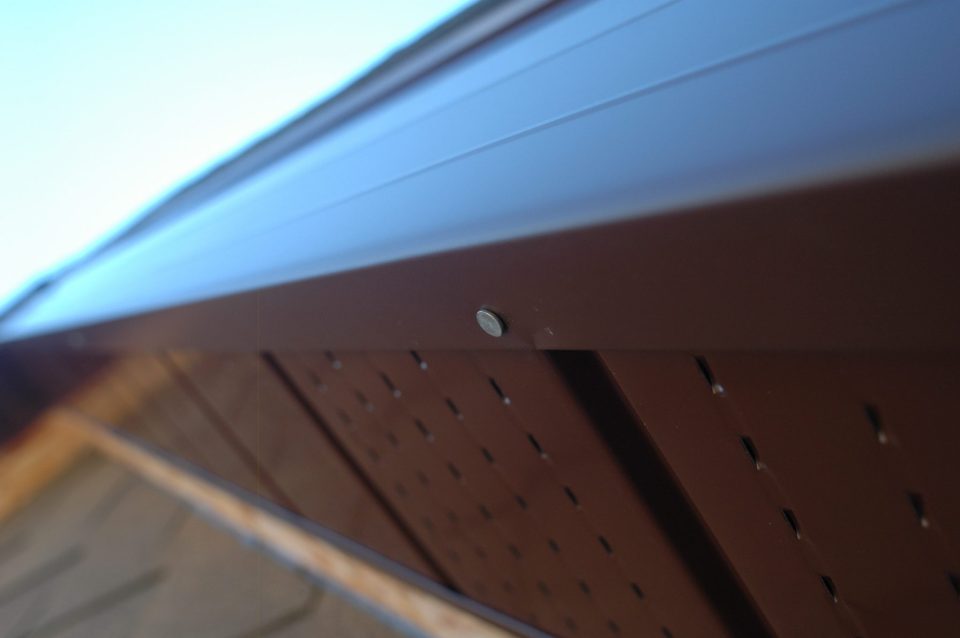
Soffit is the horizontal surface under the edge of a roof structure, and fascia is the vertical face at the edge of a roof. Many cottage owners and builders make the mistake of using wood in these locations because they want something natural. Do not do this. Soffit and fascia areas receive the worst weathering action of any outdoor location, so finishes deteriorate quickly up there. And it’s also difficult and dangerous to finish and refinish wooden soffit and fascia. Even on “natural looking” structures like cottages, wood in these locations is visually unnecessary and a huge pain to maintain. Instead, use colour-coordinated aluminum soffit and fascia. It looks good in all situations, is relatively easy to install, and doesn’t create ongoing maintenance slavery. The factory finish lasts for decades. Brown is best because you don’t see the dirt or spider webs like you will on white. Click here for a detailed lesson on installing your own soffit and fascia.
Cottage Design Idea#5: Use an Underground Electrical Service
This strategy is about both reliability and beauty. Although underground electrical services do cost more than wires supported on poles, underground service lines are less likely to get damaged by trees and ice. This is one reason underground is better. Another reason is that cottage country deserves better than to be scarred by a bunch of overhead wires running through the forest. It’s an unnecessary eye-sore. Got a rocky site with insufficient soil to meet code? I’ve installed underground services in places like these. Click below to watch my installation of service cables on rural site where my son was building with shallow soil (or no soil at all) sitting over bedrock.
VIDEO: Cottage Country Power Cable Installation
- Video Watch Time = 6 1/4 minutes







